Overview
This article focuses on the importance and proper use of the 95250 CPT code for continuous glucose monitoring (CGM) services in managing diabetes. Understanding this code is essential for healthcare providers, as it ensures accurate billing and reimbursement. This, in turn, enhances patient care by facilitating effective monitoring and management of diabetes.
It's understandable to feel overwhelmed by medical codes and billing processes. However, grasping the significance of the 95250 CPT code can empower you and your healthcare team. By ensuring correct usage, you can help improve your diabetes management and overall health outcomes.
Remember, you're not alone in this journey. We are here to support you every step of the way. If you have questions or need assistance, don’t hesitate to reach out to your healthcare provider for guidance. Together, we can navigate the complexities of diabetes management.
Introduction
In the journey of managing diabetes, the importance of accurate coding is truly significant, especially regarding CPT code 95250. This code is essential for reporting ambulatory continuous glucose monitoring (CGM) services, which play a vital role in effective diabetes care. As healthcare providers work diligently to improve patient outcomes and ensure appropriate reimbursement, understanding the nuances of this code becomes crucial. From sensor placement to data interpretation, the elements encompassed under CPT code 95250 are instrumental in empowering patients and enhancing their involvement in managing their condition.
With the increasing adoption of CGM technology and its proven benefits, navigating the complexities of billing and documentation has never been more important for healthcare professionals. Remember, you are not alone in this journey; we are here to support you every step of the way. By grasping the details of CPT code 95250, healthcare providers can foster better engagement, ultimately leading to improved care for those living with diabetes.
Overview of CPT Code 95250: Purpose and Importance
Understanding the 95250 CPT code description is essential for reporting ambulatory continuous glucose monitoring (CGM) services, which play a crucial role in diabetes management. This guideline addresses various technical aspects of CGM, including sensor placement, calibration, individual training, and data interpretation. It's important for healthcare professionals to grasp the significance of the 95250 CPT code description, as it ensures accurate billing and reimbursement for the services provided to individuals with diabetes, enabling vital monitoring for effective management of their condition.
At T2DSolutions, we recognize that the importance of CPT 95250 goes beyond administrative functions; it significantly impacts care outcomes. By utilizing this code, healthcare providers can improve the quality of care delivered to individuals, ultimately leading to better management of glucose levels. For example, studies show that the use of continuous glucose monitoring has been associated with a 29.25% increase in CGM adoption among urban residents and a 29.84% increase among rural residents. This highlights its growing relevance in diverse populations.
Real-world examples demonstrate the effectiveness of CGM in diabetes management. The Ambulatory Glucose Profile (AGP) report serves as a personalized management tool, visualizing glucose control over a 24-hour period. This comprehensive view allows both clinicians and individuals to identify periods of low and high glucose levels, enabling informed clinical decisions and adjustments to treatment plans. Such personalized insights are vital for maintaining glucose levels within target ranges, maximizing Time in Range (TIR) while minimizing Time in Hypoglycemia (TIHypo).
Healthcare professionals emphasize the benefits of continuous glucose monitoring, noting that it empowers individuals to take an active role in their diabetes management. As one expert stated, "When treating a pattern of hyperglycemia, look at least 12–18 hours past the time of the hyperglycemia you plan to treat." This perspective underscores the importance of real-time data in making informed decisions about diabetes care.
Looking ahead to 2025, the significance of the 95250 CPT code description continues to grow, driven by ongoing advancements in CGM technology and its integration into diabetes management strategies. The latest statistics reveal that patients classified as CGM users—those with two or more CGM claims—are better equipped to manage their diabetes effectively. This trend emphasizes the necessity for healthcare professionals to stay informed about coding practices and the evolving landscape of diabetes care.
In summary, the 95250 CPT code description is not merely a billing tool; it serves as a cornerstone of effective diabetes management. By ensuring proper use of this system, healthcare providers can optimize resources and improve care for individuals, ultimately leading to better health outcomes for those living with diabetes. At T2DSolutions, we are dedicated to providing educational materials and community assistance to help newly diagnosed individuals understand and utilize CPT 95250 effectively. Remember, maximizing Time in Range (TIR) while minimizing Time in Hypoglycemia (TIHypo) remains a key management goal in this context. You're not alone in this journey; we are here to support you every step of the way.
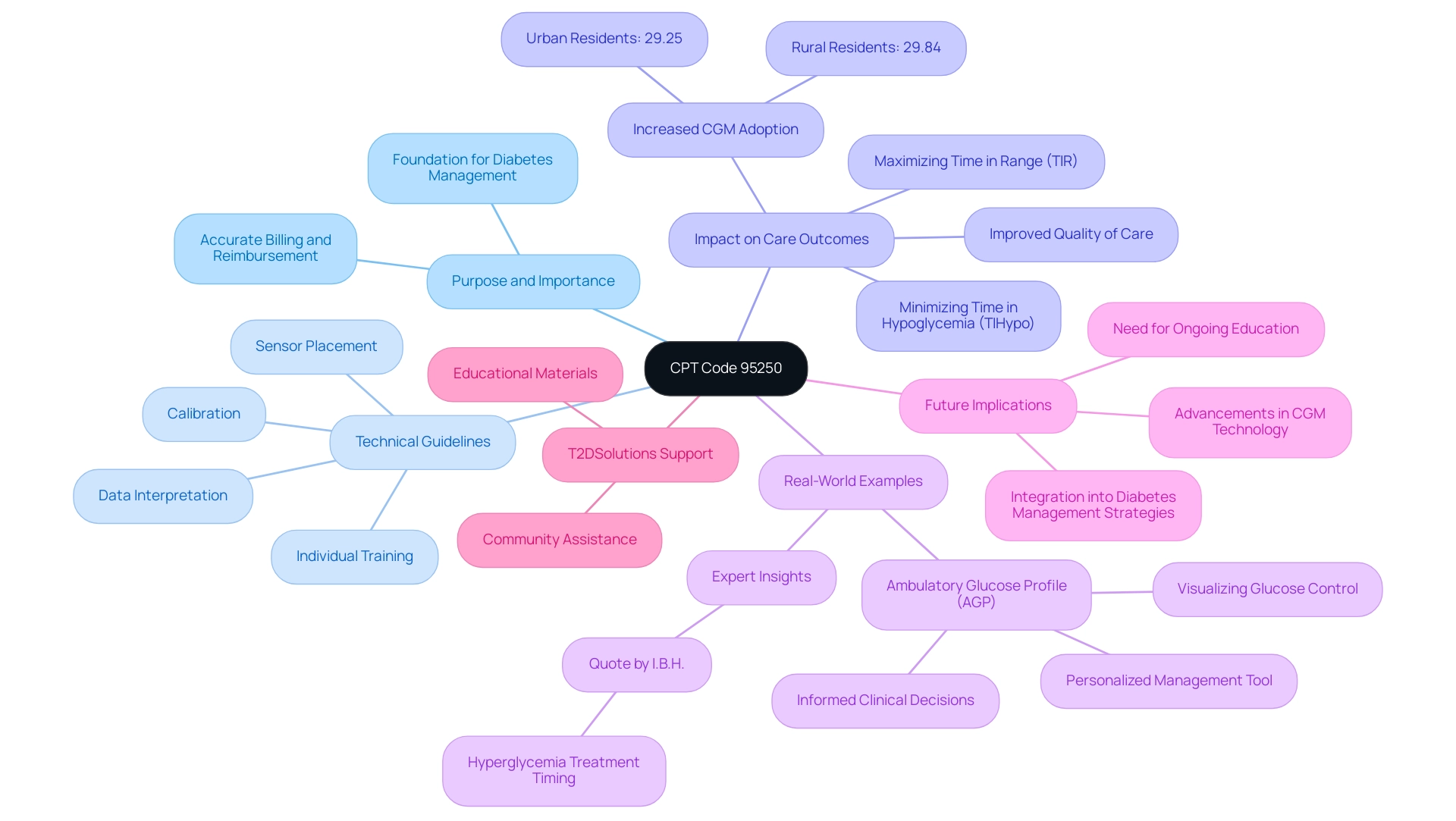
Detailed Breakdown of the 95250 Code: Services Covered
At T2DSolutions, we are dedicated to providing you with comprehensive resources for diabetes education and management. Understanding the 95250 CPT code description is a crucial part of this mission, as it covers essential services linked to continuous glucose monitoring (CGM)—services that play a vital role in effective diabetes management. Here’s what this code encompasses:
- Sensor Placement: This is the important step of inserting the glucose sensor into your interstitial tissue, which is essential for accurate monitoring.
- Hook-Up: Connecting the sensor to the monitoring device allows for effective data transmission and analysis.
- Monitor Calibration: Adjusting the device is necessary to ensure precise readings, which can significantly influence your treatment decisions.
- User Training: We believe that educating you on the proper use of the device empowers you to manage your diabetes more effectively, enhancing your engagement in your own care.
- Sensor Removal: Safely removing the sensor after the monitoring period is important for your comfort and hygiene.
- Recording Printout: Providing a report of the glucose data gathered during monitoring helps healthcare professionals analyze trends and make informed modifications to treatment plans.
These services not only enable continuous monitoring of glucose levels but also support healthcare providers in making timely, informed treatment decisions. The integration of continuous glucose monitoring into diabetes management has shown remarkable effectiveness, with studies indicating improved glycemic control and outcomes for individuals like you. For example, the Abbott FreeStyle Libre Pro system, which can be worn for up to 14 days without the need for fingerstick calibration, highlights advancements in CGM technology that enhance user experience and data accuracy.
Moreover, case studies shed light on invoicing practices related to personal CGMs, particularly the use of CPT code 95251 for analysis and interpretation, and CPT code 95249 for individual education. One case study illustrates how these coding practices reflect a commitment to quality care and operational efficiency in the ever-evolving landscape of diabetes treatment, ensuring that healthcare professionals can navigate reimbursement effectively. As Rich Weiss, Principal of Managed Solutions, LLC, notes, "Grasping the intricacies of CGM services and their billing is vital for healthcare professionals to guarantee individuals receive the highest quality care."
As advocacy efforts continue to enhance reimbursement for user CGM devices, it is essential for healthcare professionals to remain knowledgeable about these coding practices and their impact on your care. At T2DSolutions, we will keep providing valuable resources and updates to assist both you and healthcare professionals in navigating these important aspects of diabetes management. Remember, you're not alone in this journey; we are here to support you every step of the way.
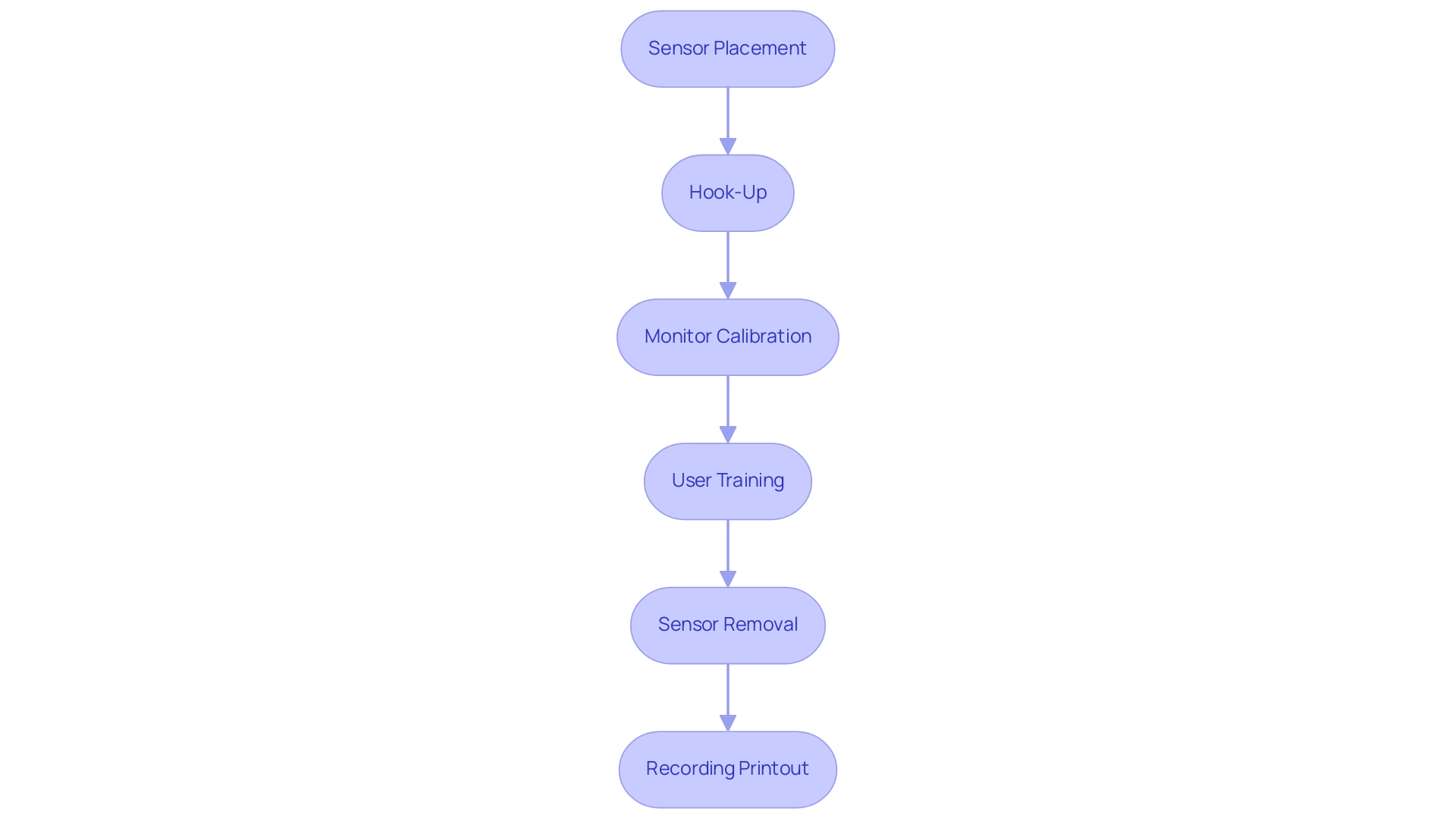
Billing Procedures for CPT Code 95250: Step-by-Step Guide
To successfully bill for CPT code 95250, healthcare providers can follow these essential steps, ensuring they feel supported throughout the process:
-
Verify Eligibility: It's important to confirm that the individual’s insurance plan covers continuous glucose monitoring (CGM) services. This verification is crucial for ensuring reimbursement and alleviating any concerns about coverage.
-
Document Services Provided: Maintaining thorough records of all services rendered under this code is vital. Detailed notes on sensor placement, patient training, and follow-up consultations are necessary. This comprehensive documentation justifies the claim and reassures both providers and patients that everything is accounted for.
-
Complete the Claim Form: Utilize the CMS-1500 claim form for outpatient services or the UB-04 form for hospital charges. Filling in all fields accurately can prevent delays in processing, providing peace of mind.
-
Include Necessary Modifiers: If applicable, adding modifiers to the claim can clarify any additional services provided on the same day. This helps support the claim's validity and ensures that all aspects of care are recognized.
-
Submit the Claim: Sending the completed claim form to the appropriate insurance provider promptly is key to expediting the reimbursement process. Timely submission can ease the burden of waiting for responses.
-
Follow Up: Regularly monitoring the status of the claim is essential. Being prepared to address any denials or requests for additional information promptly can significantly enhance the likelihood of successful reimbursement. Remember, you're not alone in this journey; proactive follow-up can make a difference.
Statistics indicate that effective claim submission practices can lead to higher success rates, making adherence to these guidelines even more critical in today’s healthcare landscape. For instance, the annual revenue from return visits charged at procedure 99212 is $337,537, emphasizing the financial consequences of efficient invoicing practices.
Additionally, as pointed out by Dr. Neda Laiteerapong, "Drs Laiteerapong and Miksanek had full access to all of the data in the study and take responsibility for the integrity of the data and the accuracy of the data analysis." This highlights the significance of data integrity in financial practices, reminding us that thoroughness matters.
Furthermore, the case study titled "Impact of Visit Length on E/M Revenue" demonstrates that visit durations can significantly influence billing revenue. This provides real-world context that underscores the importance of efficient billing procedures as outlined in the 95250 CPT code description. We are here to support you every step of the way in navigating these complexities.
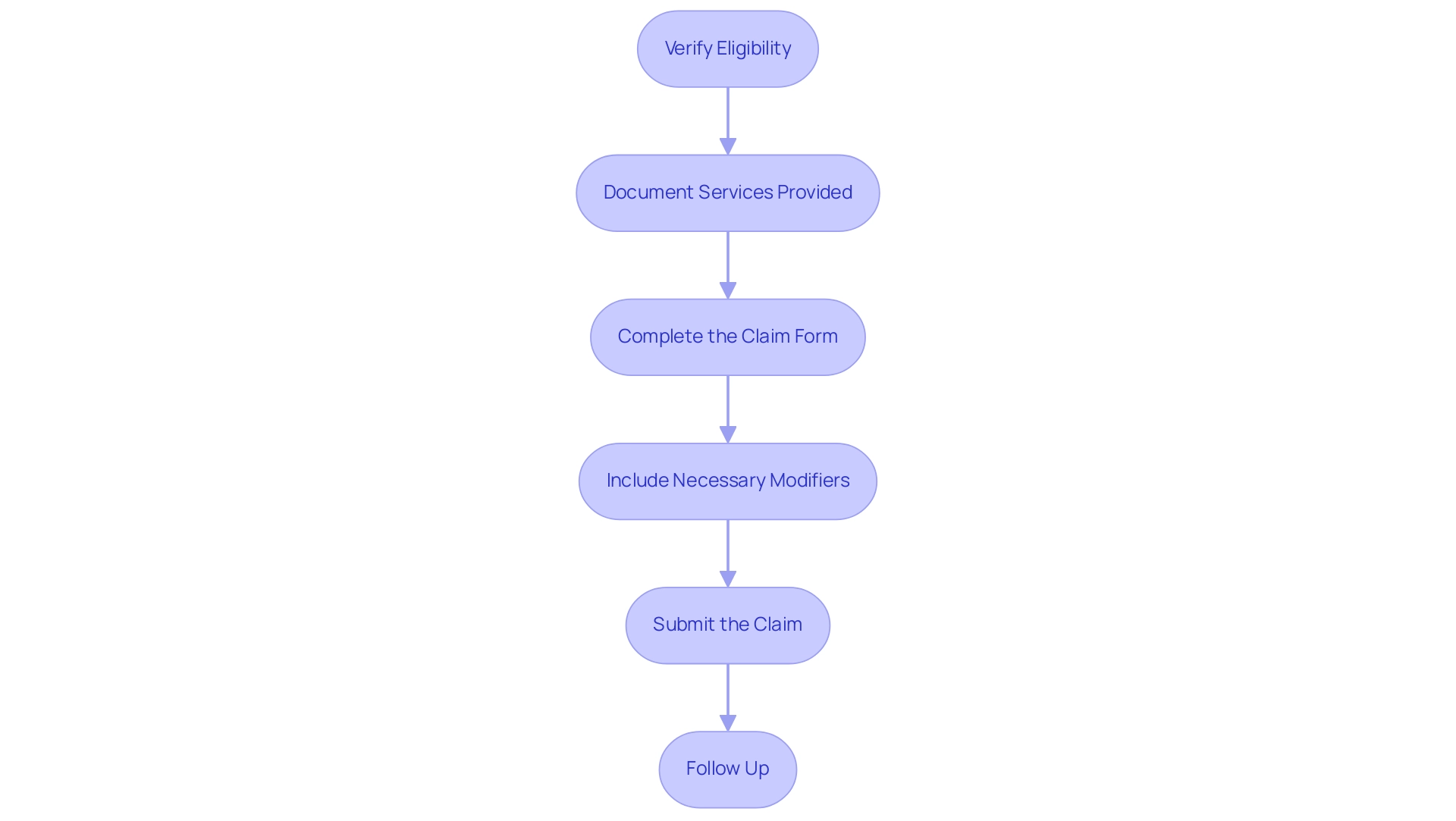
Reimbursement Insights: Navigating Insurance Coverage for 95250
Understanding reimbursement for the 95250 CPT code can be a bit overwhelming, but you're not alone in this journey. The reimbursement is influenced by several factors, including your insurer and the specific plan you have. Here are some key considerations that may help you navigate this process:
- Coverage Policies: Most major insurers, including Medicare and private payers, provide coverage for CPT code 95250. However, specific criteria may apply. It's important to familiarize yourself with the 95250 CPT code description and each insurer's policies to ensure compliance and maximize reimbursement.
- Frequency of Billing: According to the 95250 CPT code description, this code can typically be billed once monthly per individual, as long as the continuous glucose monitoring (CGM) lasts a minimum of 72 hours. This frequency is essential for maintaining consistent care and optimizing your billing practices.
- Documentation Requirements: Insurers often require comprehensive documentation to support the medical necessity of the services billed under the 95250 CPT code. This includes detailed records of your condition, the rationale for CGM use, and any relevant clinical data that supports your treatment plan.
- Appeals Process: If a claim is denied, it’s important to be prepared to navigate the appeals process. Submitting a well-supported appeal with necessary documentation and a clear explanation of the services rendered can significantly improve your chances of a successful outcome.
Recent statistics show that a significant percentage of individuals with Type 1 and Type 2 diabetes utilize CGM, highlighting its growing adoption in diabetes management. A case study titled "Demographic Factors Influencing CGM Use" revealed that CGM users tend to be younger, more likely to receive care from endocrinologists, and experience a higher incidence of hypoglycemic events compared to non-users. This underscores how demographic and clinical characteristics can affect CGM usage.
As noted by Til Stürmer, MD, MPH, PhD, understanding the reimbursement landscape is crucial for healthcare practitioners. Socioeconomic status and insurance coverage have significant indirect effects on adverse outcomes through access to diabetes technology. Advocating for comprehensive coverage policies is essential for improving access to necessary resources. Recent analyses indicate that CGM is 100% likely to be cost-effective compared to self-monitoring of blood glucose (SMBG) at a willingness-to-pay threshold of $0 per quality-adjusted life-year (QALY).
This economic advantage further reinforces the value of CGM services in diabetes management. By staying updated on reimbursement trends and requirements, healthcare professionals can enhance their practice and improve care for individuals like you. Remember, you are not alone in this journey, and there are resources available to support you every step of the way.
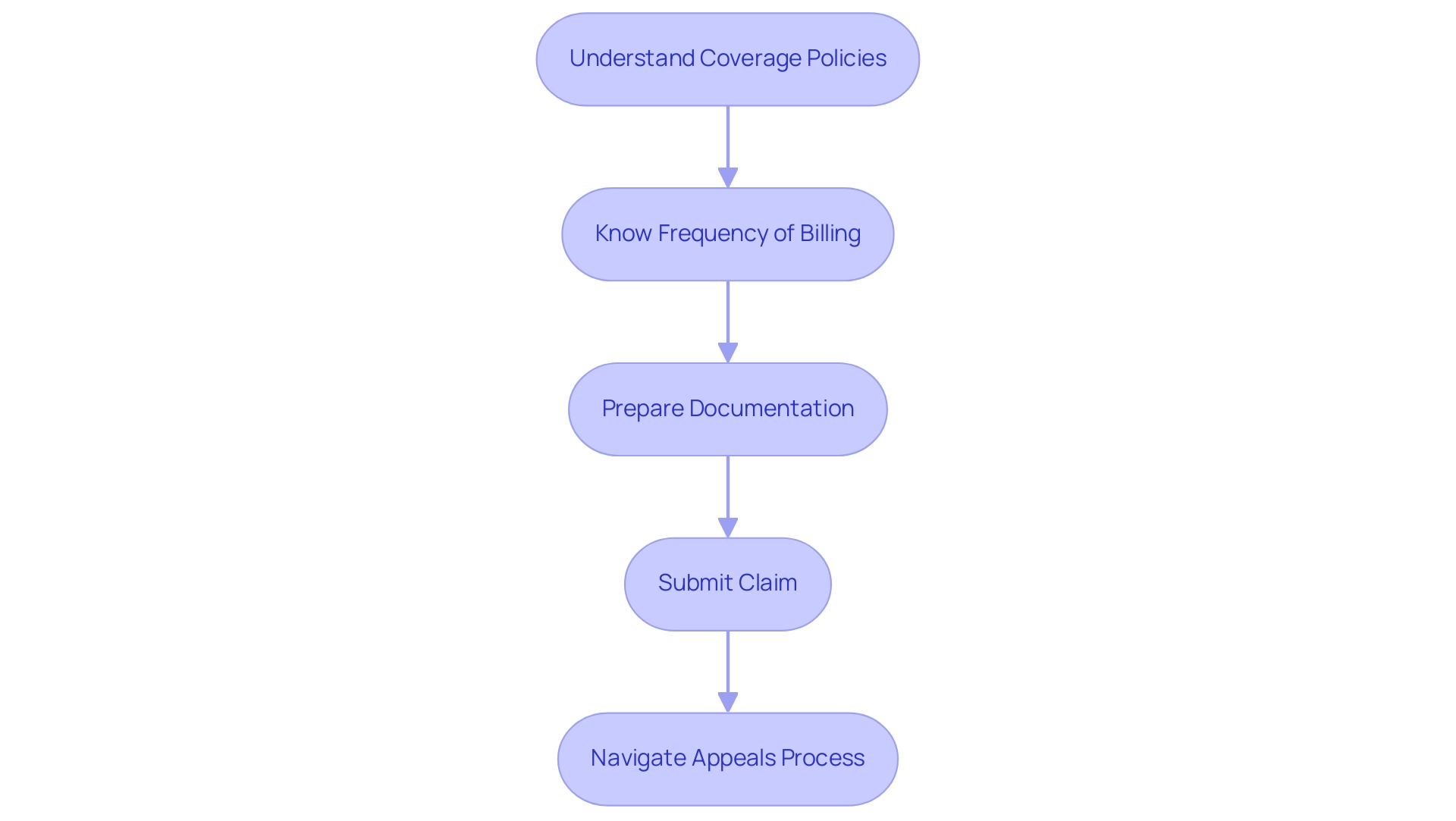
Essential Documentation for CPT Code 95250: What You Need to Know
To achieve successful billing for CPT code 95250, healthcare providers must prioritize comprehensive documentation. This includes several essential elements that not only fulfill requirements but also support the patient’s journey:
- Patient Consent: It's crucial to document that the patient has provided informed consent for the continuous glucose monitoring (CGM) services. This not only meets legal requirements but also reinforces the individual’s understanding of the procedure.
- Service Details: Providers should meticulously record the specifics of the services rendered, including dates, times, and detailed descriptions of each service. This level of detail is vital for substantiating claims and ensuring accurate billing.
- Training Records: Keeping thorough notes on the training provided to the individual regarding the use of the CGM device is essential. This documentation illustrates that the individual has received adequate instruction, impacting the effectiveness of the monitoring.
- Monitoring Data: Including printouts or summaries of the glucose data collected during the monitoring period is critical. This data serves as evidence of the monitoring's outcomes and supports the medical necessity of the services billed.
- Follow-Up Plans: Documenting any follow-up appointments or plans based on the monitoring results is important for continuity of care. This guarantees that both the caregiver and the individual are coordinated on the subsequent actions in managing diabetes.
Thorough documentation not only enables smoother invoicing processes but greatly improves care by ensuring clarity and continuity in treatment plans. A study on documentation practices in vascular surgery revealed that comprehensive training and standardized templates led to a remarkable 77.1% increase in evaluation and management charge capture rates. This underscores the impact of thorough documentation on claim approval rates. Furthermore, expert insights emphasize that failure to adhere to documentation guidelines can lead to severe consequences. As noted by Susan Flesher, "Failure to comply with documentation guidelines and submission of recurrent erroneous or fraudulent medical claims could have catastrophic consequences and result in dismissal from government-funded medical reimbursement programs."
By adopting best practices in documentation, healthcare professionals can enhance their invoicing precision and ultimately improve the quality of care given to patients. You're not alone in this journey; specialized education in billing and coding has been suggested to enhance comfort and accuracy for practitioners, further supporting the need for improved documentation practices. It is important to note that the limitations of the vascular surgery study include its single-center experience and retrospective design, which should be considered when interpreting the findings.
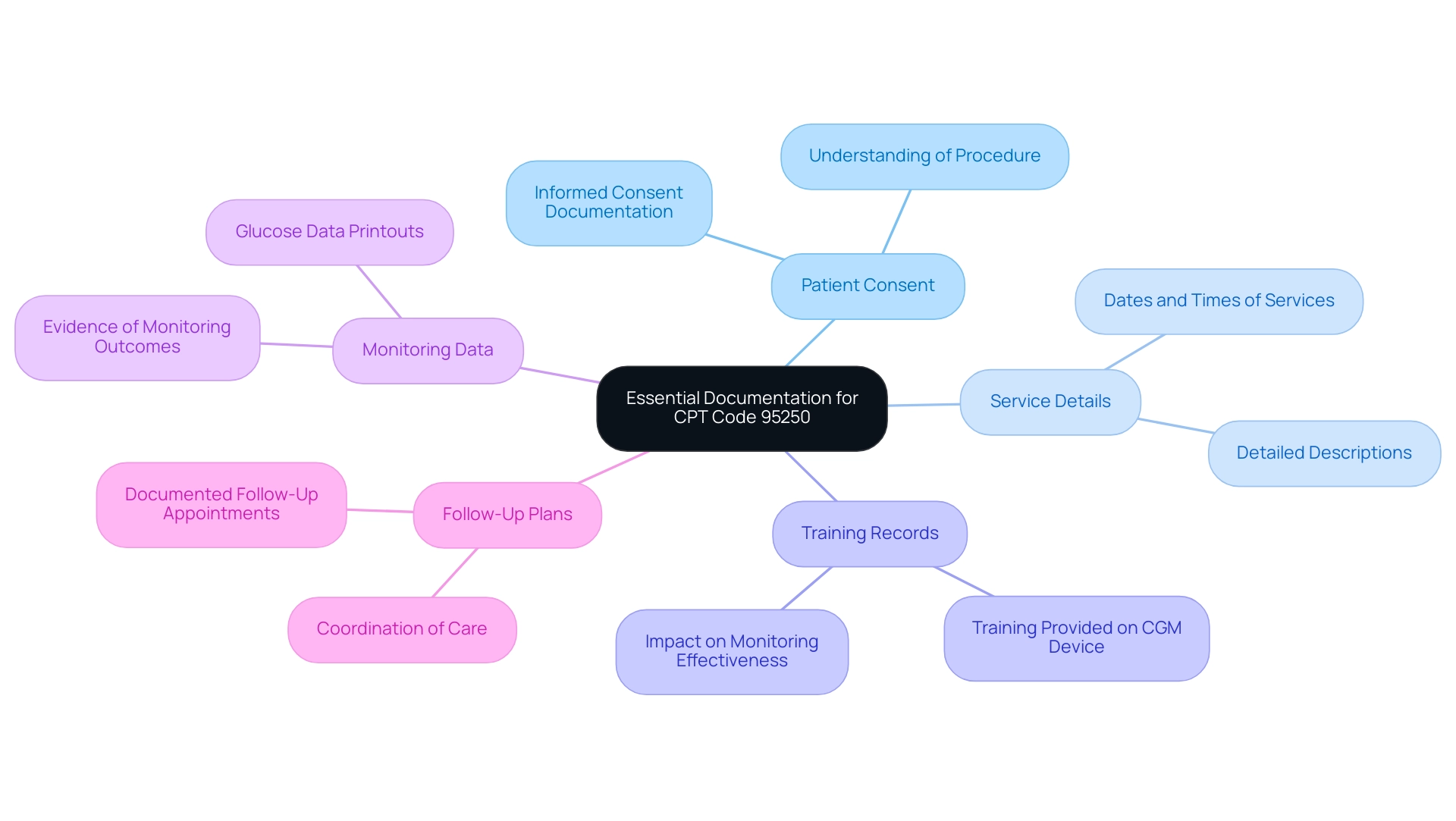
Challenges in Billing CPT Code 95250: Common Issues and Solutions
Navigating the complexities of billing CPT code 95250 can be daunting for healthcare providers, but understanding common challenges can lead to more efficient reimbursement and fewer claim denials.
-
Claim Denials: It's understandable to feel overwhelmed by the frequent issue of claim denials, often stemming from insufficient documentation or not meeting specific insurance criteria. As Susan Flesher wisely points out, "Failure to comply with documentation guidelines and submission of recurrent erroneous or fraudulent medical claims could have catastrophic consequences." To mitigate this risk, it’s crucial to ensure that all documentation is thorough and accurate before submission. Remember, denial of payment or non-payment can lead to significant revenue loss, averaging $9,831.33 per month for healthcare organizations.
-
Misunderstanding Coverage: Many providers may feel uncertain about the specific coverage policies of various insurers. Regularly reviewing payer policies and staying informed about any changes can help practitioners avoid costly mistakes and ensure compliance with coverage requirements.
-
Billing Frequency Issues: It’s common for some providers to inadvertently attempt to bill for services more frequently than allowed. Adhering strictly to the once-per-month invoicing guideline is essential to prevent denials and maintain compliance with payment regulations.
-
Inadequate Training: A lack of sufficient training on the intricacies of charging for Continuous Glucose Monitoring (CGM) services can pose challenges for staff. Conducting regular training sessions can keep your team informed on payment procedures and changes, enhancing overall efficiency.
The importance of efficient invoicing practices is highlighted in the case study titled 'Importance of Medical Invoicing & Collections,' which reveals that collections from patients account for 23.2% of a healthcare organization’s revenue. This underscores the critical need for effective invoicing practices to ensure financial stability for healthcare organizations.
By proactively addressing these challenges, healthcare providers can significantly improve their invoicing processes, reduce the likelihood of claim denials, and ultimately enhance their financial stability. Embracing new technologies and automated billing solutions—especially considering the projected growth of the global healthcare AI market from $11 billion in 2021 to nearly $188 billion by 2030—can further streamline these processes, creating a more patient-centered approach to billing in diabetes management. You're not alone in this journey; we are here to support you every step of the way.
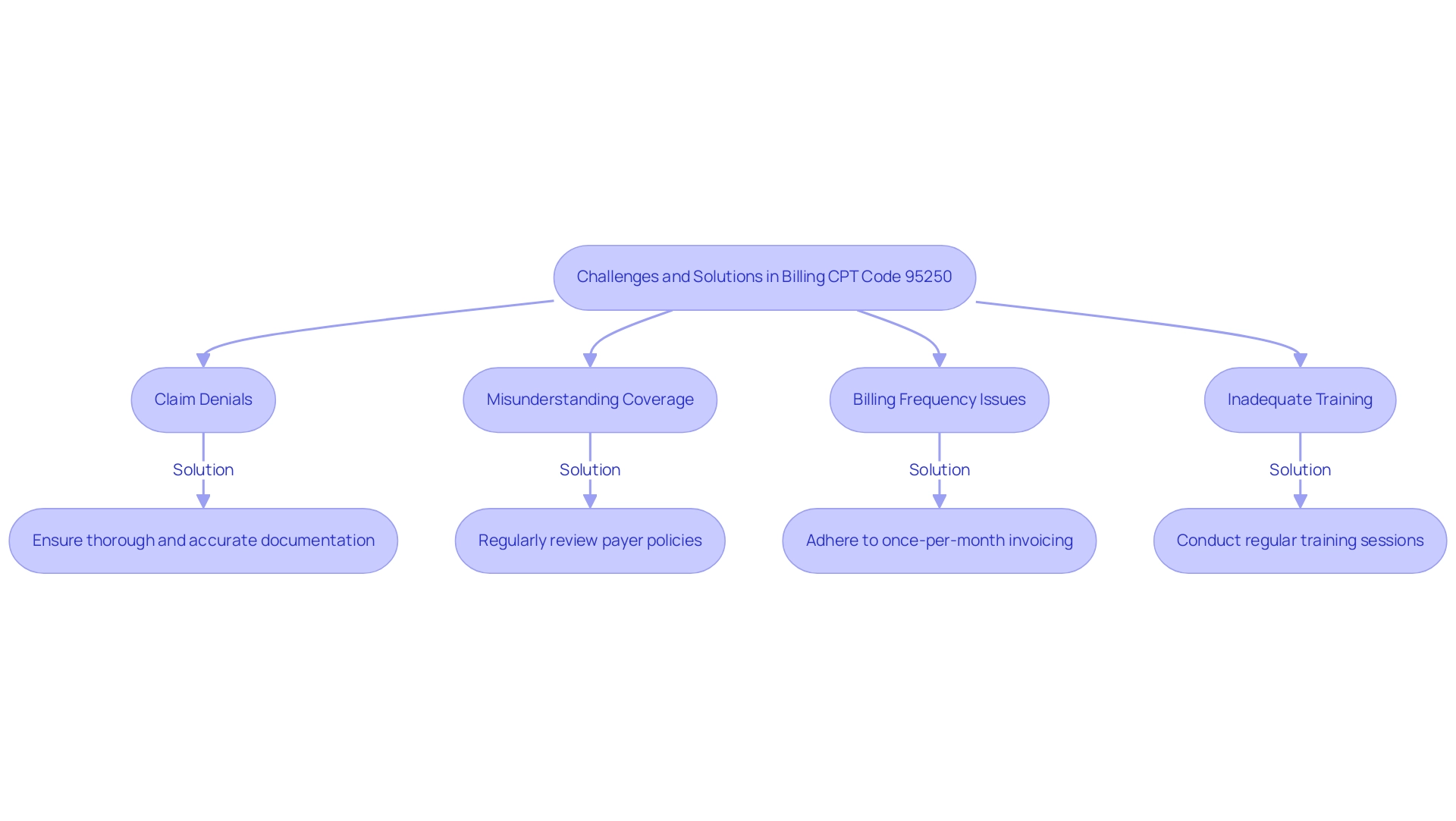
Real-World Applications of CPT Code 95250: Case Studies
Case Studies on CPT Code 95250 Effectiveness
Case Study 1: A 45-year-old patient diagnosed with Type 2 diabetes was referred for continuous glucose monitoring (CGM) to address their fluctuating blood sugar levels. The healthcare provider utilized the 95250 CPT code description to bill for the sensor placement, client training, and subsequent data analysis. Following the implementation of CGM, the individual reported a notable improvement in glycemic control, underscoring the effectiveness of this service in managing diabetes.
As C.K. noted, "The integration of continuous glucose monitoring into healthcare can significantly enhance treatment outcomes."
Case Study 2: A 60-year-old individual with a history of hypoglycemia unawareness underwent a 72-hour CGM session. The supplier charged for the setup and monitoring services utilizing CPT 95250. The data collected during this period enabled the healthcare provider to make informed adjustments to the patient's insulin regimen, resulting in a significant reduction in episodes of hypoglycemia.
This case illustrates the critical role of the 95250 CPT code description in enhancing diabetes management through continuous monitoring.
These case studies highlight how the 95250 CPT code description plays a vital role in improving diabetes management through continuous monitoring. By enabling real-time data gathering and analysis, healthcare professionals can tailor treatment plans more effectively, ultimately leading to better outcomes for individuals. Moreover, it's important to note that the national average allowable Medicare reimbursement for CPT 95251 is $44, which emphasizes the financial considerations for healthcare practitioners when implementing these essential services.
Additionally, T2DSolutions is dedicated to building a supportive community that encourages individuals to share their experiences, fostering resilience and hope in managing diabetes. Through educational resources and community support, T2DSolutions aims to empower both individuals and healthcare providers, enhancing the overall effectiveness of diabetes management strategies. Remember, you're not alone in this journey—we are here to support you every step of the way.
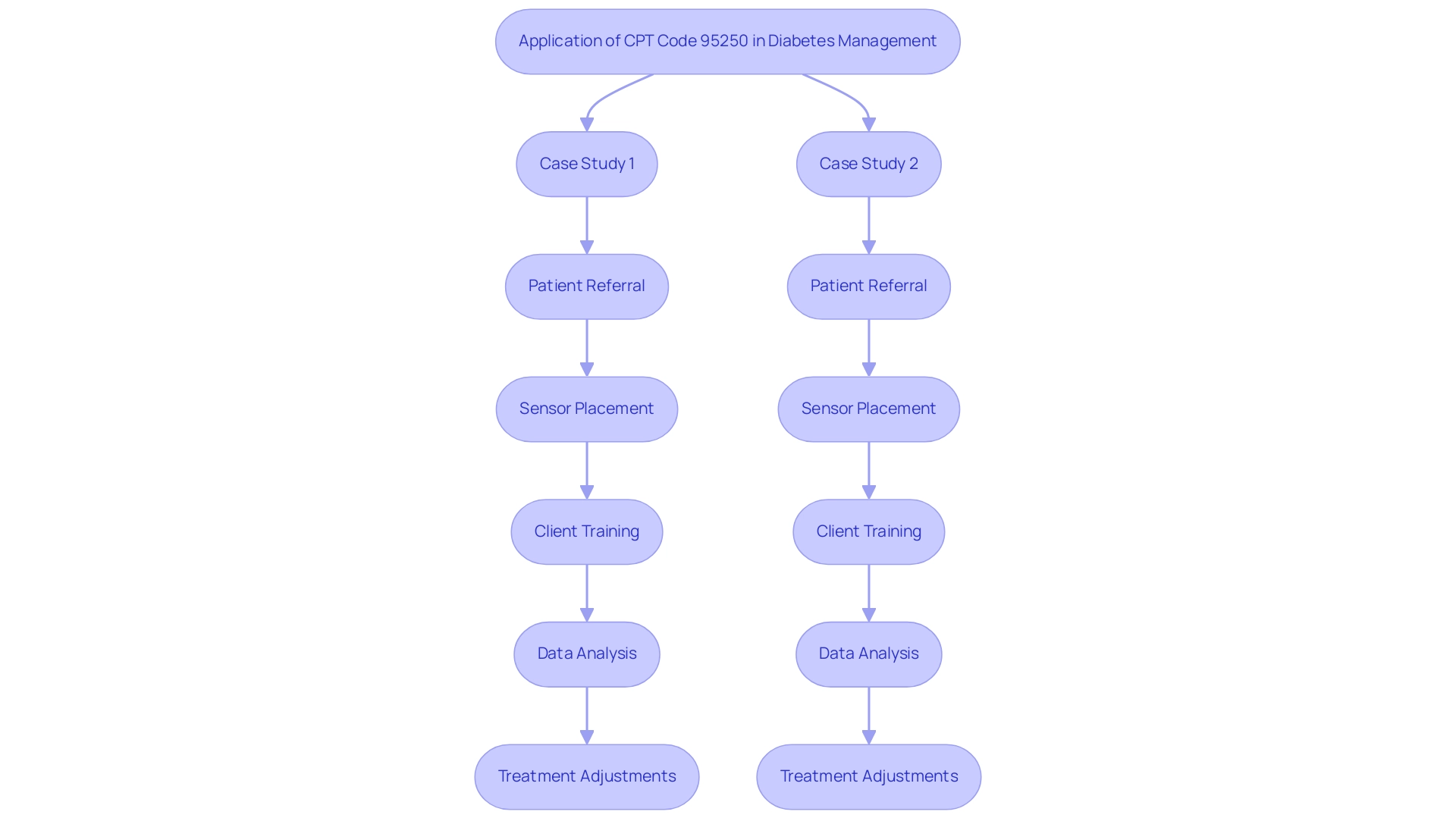
Key Takeaways on CPT Code 95250: Summary and Best Practices
Key Takeaways:
-
CPT code 95250 is essential for billing continuous glucose monitoring (CGM) services. It includes important aspects like sensor placement, patient training, and data analysis. This program not only enables reimbursement but also enhances care for individuals through effective monitoring. As Diana Isaacs notes, "The integration of P-CGM technology in primary care settings can enhance diabetes management by improving glycemic control and facilitating better patient-provider communication."
-
T2DSolutions serves as a vital resource hub for diabetes education and management. It equips healthcare professionals with the necessary tools and information to optimize the use of the 95250 CPT code description. By leveraging the resources available through T2DSolutions, providers can deepen their understanding of CGM services and ultimately improve patient outcomes.
-
Precise documentation and a thorough understanding of insurance policies are crucial for successful invoicing and reimbursement. Providers must ensure that all necessary information is meticulously recorded to avoid claim denials and ensure timely payments. Remember, you're not alone in navigating this process.
-
Being aware of common invoicing challenges is essential. Providers should adopt proactive strategies to address these hurdles, such as regular audits of invoicing practices and staying informed about changes in insurance requirements. It's understandable to feel overwhelmed, but taking these steps can make a difference.
-
Real-world applications of the 95250 CPT code description have shown its effectiveness in improving outcomes for individuals. For instance, a study utilizing a large, ethnically diverse database highlighted the code's role in achieving better glycemic control, with patients reaching an A1C of 5.9% by March 2017. This showcases the tangible benefits of effective CGM reimbursement.
-
Ongoing education and training on invoicing methods are essential for healthcare professionals. Frequent updates can improve operational efficiency and significantly reduce the chances of claim denials, allowing healthcare professionals to focus on delivering high-quality care. We are here to support you every step of the way.
By adhering to these best practices and utilizing the resources offered by T2DSolutions, healthcare providers can optimize their use of the 95250 CPT code description. This ensures they enhance diabetes management while effectively streamlining their billing processes.
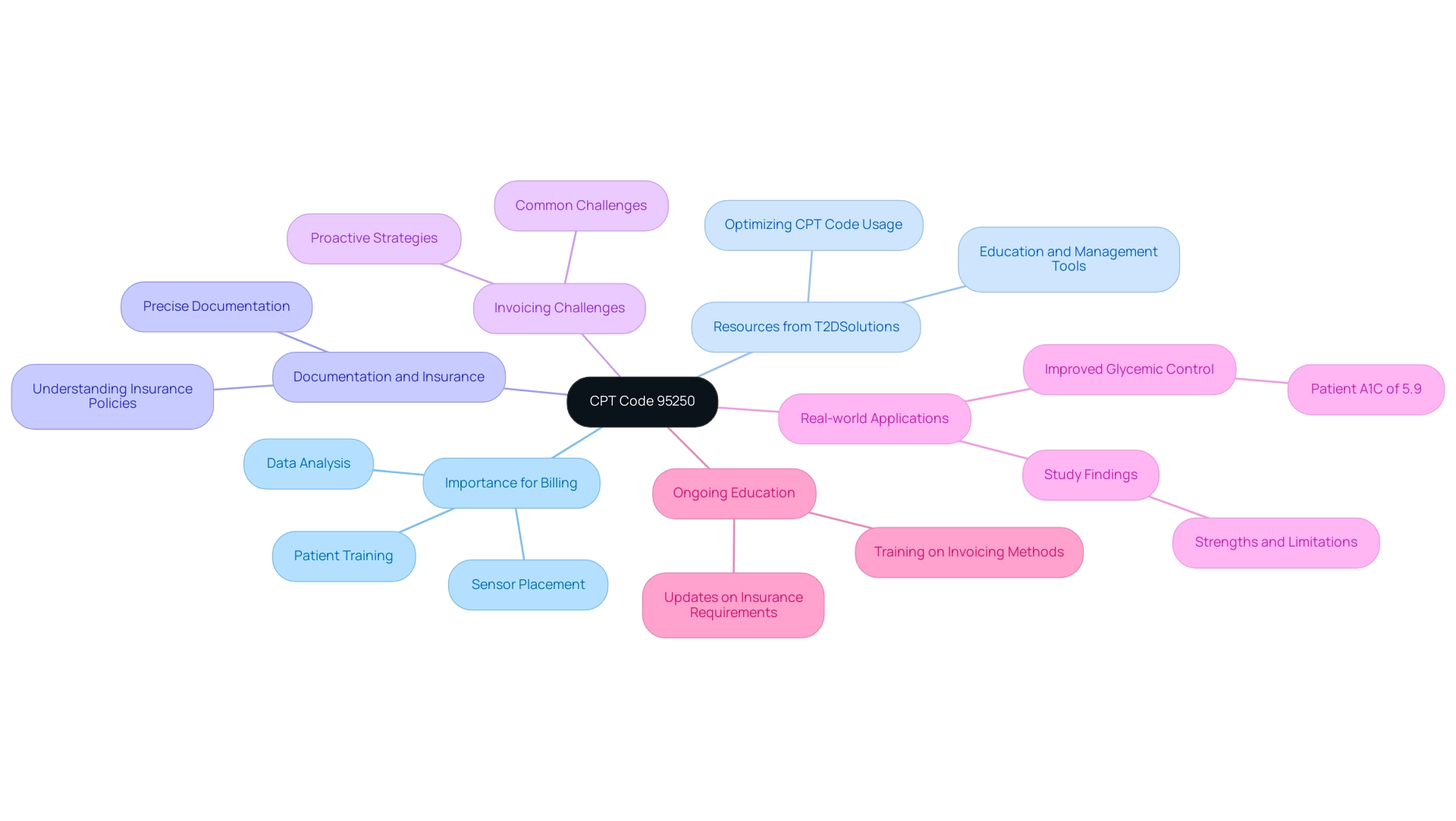
Conclusion
CPT code 95250 is a vital part of diabetes management, offering essential services like continuous glucose monitoring (CGM). This code includes important components such as sensor placement, patient training, and data analysis, all contributing to better patient care and outcomes. By understanding and effectively using this code, healthcare providers can ensure accurate billing and reimbursement, ultimately enhancing the quality of care for patients living with diabetes.
The importance of CPT code 95250 goes beyond just administrative tasks; it empowers patients to actively manage their condition. Real-world applications and case studies consistently show that CGM, supported by this code, leads to improved glycemic control and fewer episodes of hypoglycemia. Such evidence highlights the need for healthcare providers to stay informed about coding practices and the evolving landscape of diabetes care.
As providers navigate the complexities of billing for CPT code 95250, it's crucial to prioritize thorough documentation and be mindful of common challenges that may arise. By implementing best practices and utilizing available resources, such as those offered by T2DSolutions, healthcare professionals can enhance their approach to diabetes management while ensuring smooth billing processes. Ultimately, the effective use of CPT code 95250 not only improves diabetes care but also creates a supportive environment for both patients and providers, paving the way for better health outcomes. You're not alone in this journey, and we are here to support you every step of the way.
Frequently Asked Questions
What is the significance of the 95250 CPT code in diabetes management?
The 95250 CPT code is essential for reporting ambulatory continuous glucose monitoring (CGM) services, ensuring accurate billing and reimbursement for diabetes management. It plays a crucial role in enabling vital monitoring for effective management of the condition.
What services are covered under the 95250 CPT code?
The 95250 CPT code encompasses several services, including sensor placement, hook-up to the monitoring device, monitor calibration, user training, sensor removal, and providing a recording printout of glucose data.
How does continuous glucose monitoring (CGM) impact diabetes management?
CGM improves diabetes management by providing real-time data on glucose levels, allowing for informed clinical decisions and adjustments to treatment plans. It helps maximize Time in Range (TIR) while minimizing Time in Hypoglycemia (TIHypo).
What are the reported benefits of using CGM technology?
Studies indicate that CGM use is associated with improved glycemic control and outcomes for individuals with diabetes, with significant adoption rates among diverse populations.
How does the Ambulatory Glucose Profile (AGP) report assist in diabetes care?
The AGP report visualizes glucose control over a 24-hour period, helping both clinicians and individuals identify periods of low and high glucose levels, which aids in making informed treatment decisions.
Why is it important for healthcare professionals to understand coding practices related to CGM?
Understanding coding practices, such as the 95250 CPT code, is vital for healthcare professionals to ensure individuals receive quality care and for navigating reimbursement effectively.
What future trends are expected regarding the 95250 CPT code and CGM technology?
The significance of the 95250 CPT code is expected to grow due to ongoing advancements in CGM technology and its integration into diabetes management strategies, highlighting the need for healthcare professionals to stay informed.
What support does T2DSolutions provide regarding the 95250 CPT code?
T2DSolutions offers educational materials and community assistance to help individuals understand and utilize the 95250 CPT code effectively, supporting better diabetes management.
